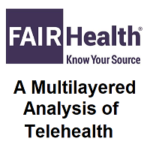 Harmony Healthcare IT Survey Reveals Millennials’ Relationship with Health Care
Harmony Healthcare IT Survey Reveals Millennials’ Relationship with Health Care
From hot yoga to juicing, it’s no secret that millennials love wellness. In fact, the generation has often been referred to as the “wellness generation.” And while staying in shape is a crucial component to overall health, there are still many other key factors to maintaining health such as annual physicals and getting medical advice from a professional.
But how often are millennials getting a check-up and how many actually have a primary care physician? As a health data management firm interested in the state of millennial health, we surveyed more than 2,000 millennials between the ages of 23 and 38. Check out the survey.
 Kaufman Hall’s Healthcare Merger & Acquisition Activity Report: Q2 2019 reported the total number of transactions involving hospitals and health systems dropped in the second quarter of 2019, but the size of the mergers and acquisitions (M&A) announced pushed total transacted revenue to its highest levels since 2017.
Kaufman Hall’s Healthcare Merger & Acquisition Activity Report: Q2 2019 reported the total number of transactions involving hospitals and health systems dropped in the second quarter of 2019, but the size of the mergers and acquisitions (M&A) announced pushed total transacted revenue to its highest levels since 2017.
Activity Breakdown by Sector:
- Academic medical centers were acquirers in 3 of the 19 transactions announced in the second quarter.
- Religiously-affiliated health systems were acquirers in 3 of the 19 announced transactions. Two of the sellers in these transactions were non-affiliated for-profit hospital operators, and one was a religiously-affiliated health system.
- For-profit systems were acquirers in 2 of the 19 announced transactions.
 The annual Cost of a Data Breach Report, conducted by the Ponemon Institute and sponsored by IBM Security, analyzes data breach costs reported by 507 organizations across 16 geographies and 17 industries. Read the report to discover all the factors that influence the cost of a data breach and which security measures can help organizations reduce the financial impact.
The annual Cost of a Data Breach Report, conducted by the Ponemon Institute and sponsored by IBM Security, analyzes data breach costs reported by 507 organizations across 16 geographies and 17 industries. Read the report to discover all the factors that influence the cost of a data breach and which security measures can help organizations reduce the financial impact.
Report highlights:
- USD 3.92 million: Average total cost of a data breach
- United States: Most expensive country: USD 8.19 million
- Healthcare: Most expensive industry: USD 6.45 million
- 25,575 records: Average size of a data breach
 A Multilayered Analysis of Telehealth: How This Emerging Venue of Care Is Affecting the Healthcare Landscape
A Multilayered Analysis of Telehealth: How This Emerging Venue of Care Is Affecting the Healthcare Landscape
Telehealth use soars 624% – Mental health among top reasons patients seek treatment via telehealth. Telehealth continues to grow rapidly in both availability and popularity. The use of telehealth grew 624% from 2014 to 2018, according to a new study from FAIR Health.
Provider and patient communication via telehealth (not in hospitals) saw the greatest increase: nearly 1,400%. Provider-to-patient-based telehealth was greater in urban than rural areas from 2014 to 2018.
FAIR Health looked at over 29 billion private health care claim records:
- In 2018, (non-hospital-based) provider-to-patient telehealth accounted for 84% of all telehealth claims, up from 52% in 2014.
- People age 31-40 are the highest users of telehealth, accounting for 21% of telehealth claims.
- And 65% of all telehealth claims in the period 2014-2018 were associated with females.
- The top 3 reasons people sought treatment from a provider via telehealth:
- acute upper respiratory infections
- mood (affective) disorders
- anxiety and other nonpsychotic mental disorders
